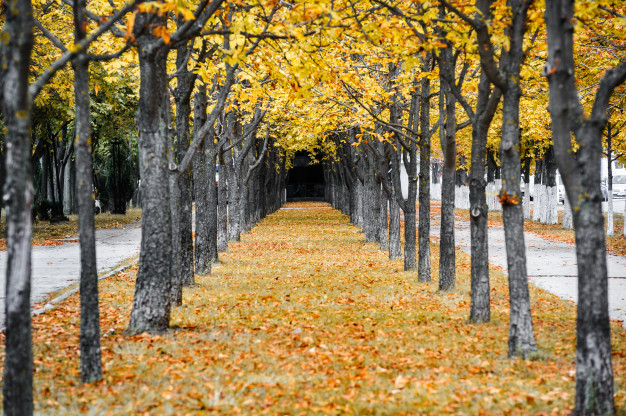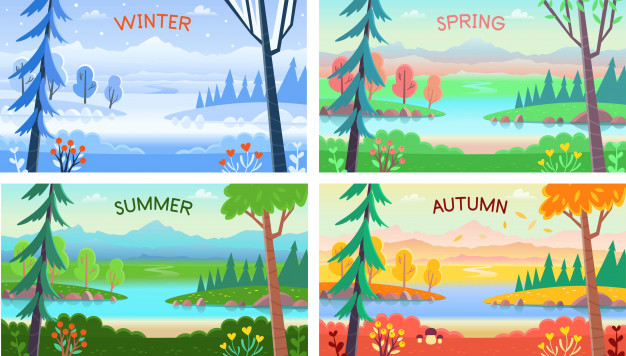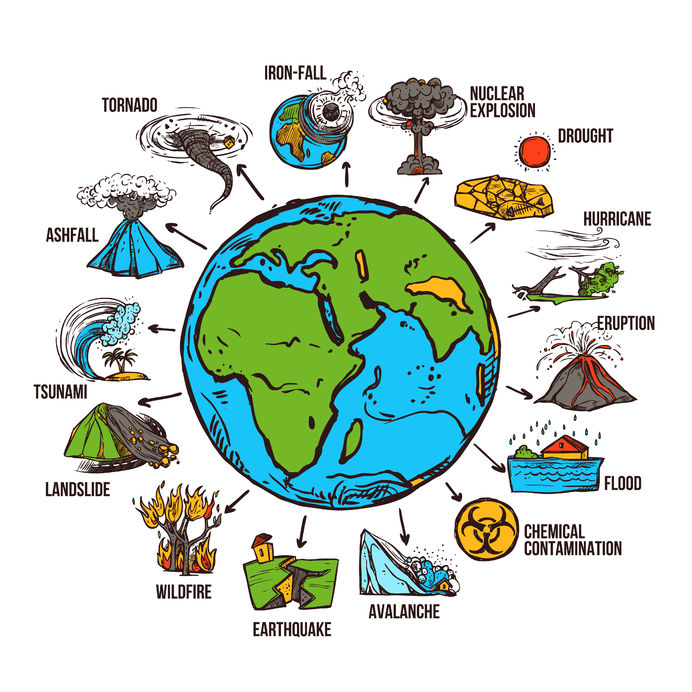The seasons of India have been structured by the Hindu calendar, which indicates 6 types of seasons, or rituye, named spring, summer, monsoon, autumn, pre-winter, and winter.
The distance from sea level, altitude, and latitude all influence the quality of each season.
In the Vedic period, the Hindu people used to follow the lunisolar calendar, which was prominent not only in India but also in South Asia.
All the popular occasions and festivals of India are based on the Hindu calendar. Here we are describing the list of 6 seasons in India, so let’s have a closer look at that:
Spring or Vasant

The middle of February lasts until the middle of April, called the spring season, and it’s quite a pleasant and favorable period, and people love this season so much. The temperature is stable at not more than 31 °C.
You can see the new-born leaves from the trees and blooming flowers spreading the fragrance of flowers and soil. As it comes after the winter season, days become a little longer, and in ancient times, this season was considered a rejuvenation or rebirth of the earth.
The Indian festivals like Holi, Gudi Padwa, and Basant Panchmi celebrated in this season.
Summer or Grisham

Grisham stated for Garmi, or hot, that the summer season is very hot as the heat of the sun rises, especially in India. The temperature can vary from 38 °C to 42 °C.
The days become longer, and the nights are shorter. It starts in the month of May and lasts until June. People love to rest at home in front of the AC or cooler. The heating air can affect you and make you sick.
In the Hindu Panchang, these months are called Jyeshta, or Jeth, and Ashadaha. The main Indian festival of this season is the Rath Yatra.
Monsoon or Varsha

Varsha, also called rain, is the monsoon season that starts in July and lasts until August. It just comes after the summer season and provides some relief.
The temperature drops a little, dark clouds spread to the sky, and the earth becomes more green and vibrant, but in some areas, due to heavy rainfall, the situation gets worse.
In dense green areas, many types of insects and snakes come out and can be threatening to people.
People also call this Savan, or Shravana, and Bhado, or Bhadrapada, according to the Hindu calendar. Krishna Janmasthmi, Onam, and Rakhi are the main occasions of these months.
Autumn or Sharad

This season is also known as the falling season, as you may see the falling tree leaves. The weather feels pleasant, with a cool breeze and days and nights of equal length.
The sky is clear from clouds, and the rivers are also clean. It starts in September and lasts until October.
The temperature remains at 32 °C, and these two months are also known as Ashwin and Kartika. Sharad Purnima, Dushera, and Navratri are the main festivals of this season and are celebrated gracefully in India, and you can feel positive energy during this season.
Pre-winter or Hemant

As the name suggests, this is the period or the beginning of winter. The temperature gets down, and you can feel the cold wind and short days.
It remains for two months, November and December, and the Hindu Panchanga names these months Aghan and Pousha. You may feel cold during the night and early mornings.
In the old days, this season was the symbol of a new start and to say goodbye to all old things.
This is also a lovely time for traveling and outings. Diwali, Guruparv, and other occasions are the main attractions of this season.
Winter or Shita/Shishir

After the pre-winter, now it is time for the full winter season. The whole country feels the cold and dryness in the atmosphere.
According to the Hindu calendar, these two months—the middle of December and mid-February—are known as Magha and Phalgun.
The temperature remains less than 23 °C, and in some parts, it may increase or decrease. You may see people on the streets around the fire covered in blankets.
The main Indian occasions of this season are Shivaratri, Lohri, and Makar Sankranti. People prepare various dishes that provide some relief from the cold during this season.
Conclusion
India, a land of vibrant culture and diverse landscapes, also boasts a unique climatic pattern that is clearly characterized by its seasons.
India’s cultural ethos deeply intertwines with the seasons, making them more than just a division of the year. Each season brings its own set of festivals, foods, and traditions, reflecting the diversity and adaptability of the Indian way of life. Each season, from the scorching heat of summer to the refreshing rains of the monsoon, embraces its own set of rituals and celebrations.
In conclusion, the seasons in India offer a kaleidoscope of experiences, each with its own charm and challenges. They shape the country’s agriculture, dictate cultural festivities, and influence the daily lives of its people. Understanding the seasons means understanding the heart of India, a country that finds unity in diversity and strength in its seasonal rhythms.






One Comment
lol